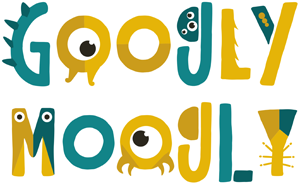Successful businesses rarely have the time and energy to foster employee’s skills. Before jumping into long meetings, it’s a good idea to energize your team and hone their ability to listen, share information, and create an environment that encourages communication. Luckily, improv for business allows us to focus on employee skills while preparing for a meeting. Using improvisation helps us understand that:
- Conversations are built from the ground up. Conversations are a give and take. By using your verbal and non-verbal cues, you build a supportive breeding ground for collaboration. Listen to understand, not just to respond.
- Every idea is a bridge to the next idea. Each interpretation has a thread that connects it to the original idea. Supporting other’s ideas by building on them encourages a positive environment in which creativity can flow. When we Yes, And each other, we establish a greater level of empathy and respect.
- Creation is a process not a product. There are two parts to the process: generating ideas (creation) and then deciding which idea or ideas to turn into action (editing). Using Yes, And in a supportive environment (even if it’s just your own head), can help to generate and build upon your ideas.
So, here are a few improv exercises that are not only an ice breaker but a way of achieving the communication and ideation described above.
Improv Exercise: Red Ball
Objective: Make sure your message is sent and received
Step One:
Players circle up. The facilitator pantomimes reaching into a large bag, and pulls out a small Red Ball.
Step Two:
The Red Ball is passed around the group with deliberate focus and acceptance. The way to pass it is as follows:
- Player One (as they are throwing, makes eye contact with somebody else in the circle): “Red Ball”
- Player Two (receiving): says “Red Ball thank you.”
- Player Two (to someone else): “Red Ball.”
This exchange is important, as it ensures that the improvisers send the objects clearly, and that the receiver acknowledges what they have just caught. It’s important that players react to not only the size of the ball but also the weight.
Step Three:
From here, the facilitator can pull anything they’d like out of the bag. It’s common to stay a little grounded before you pull out crazy stuff, and many people will go from “Red Ball” to “Yellow Ball” to “Blue Ball” (the colors vary in sizes).
To take the game to the next level, try and throw things such as “Lead Ball” (very, very heavy). After that, consider pulling out “piano,” “puppy,” “fire,” or anything in the known or unknown universe.
Improv Exercise: 7 Things
Objective: Thinking on your feet and supporting each other’s ideas
Step One:
Players stand in a circle. (All players begin a drum roll like sound, on laps, snapping)
Step Two:
Player one asks the player to their left for a list of any 7 things, ie: “Lance, may I have 7 of your favorite mexican foods?” “Katie, i would like to know 7 names for cartoon bunnies that don’t exist!” The asks can be fanciful or real life.
Step Three:
Player two responds with their list of 7 and the group counts off after each, ie:
Lance: Tacos!
Group: One!
L: Chalupas!
G: Two!… and so on until
L: Fiestaware!
G: Seven! Seven things!
Step Four:
Player then turns to their left and prompts a new list of seven things!
One round is fun, two rounds is better.





